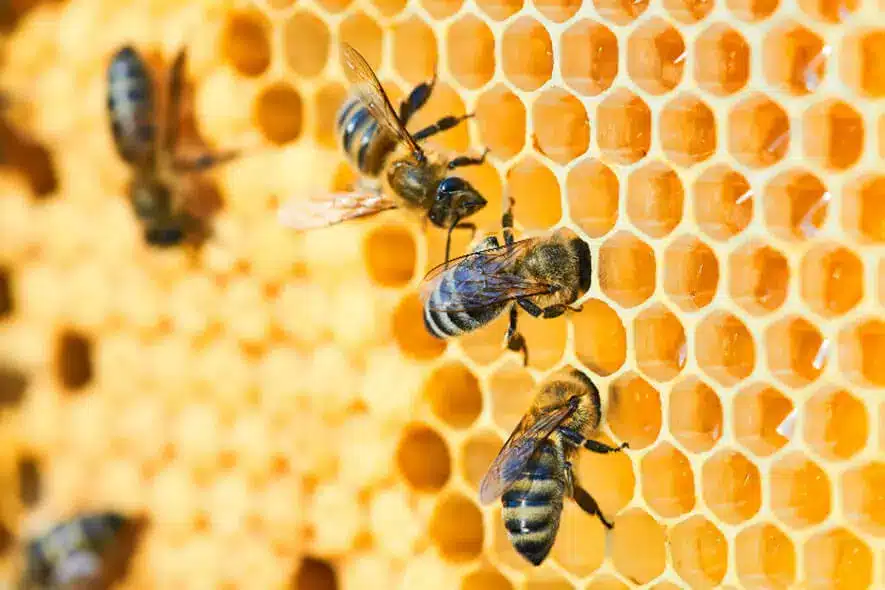A typical homeowner gets a little freaked out of he finds a massive swarm of bees on his house or somewhere in his yard. The temptation might be to break out the bug spray or a garden hose.
That would be the wrong approach. Honey bees play a critical role in world food production. Instead of destroying a bee swarm, you should leave them alone or call a beekeeper or an insect control professional that has the resources and skill to safely relocate the bees.
Here are some interesting facts about honey bees that you might not know:
1) Most die young
On average, a worker bee survives just six to eight weeks during summer months. Most die because their wings wear out. Queens can live as long as five years.
2) They work hard
In their short lifespans, worker bees fly the equivalent of one-and-a-half times around the earth, according to the American Beekeeping Federation. During its life a typical worker bee produces 1/12th of a teaspoon of honey.
In addition to honey, other products bees produce that people use include beeswax, propolis (a bee glue used in health supplements and varnish), royal jelly (a very expensive dietary supplement and fertility stimulant) and bee venom, used by some to treat a variety of health ailments including arthritis.
3) They help farmers
Some of the commercial crops that depend on honeybees for pollination include cucumbers, almonds, melons, cantaloupe, apricots, cherries, pears, apples, prunes, plums, avocados, kiwi, blueberries and cranberries. Bees also pollinate some crops for seed production including alfalfa, carrots and onions.
4) They like company
A large colony can have up to 80,000 bees. The queen helps build the colony by laying up to 3,000 eggs per day.
5) They have a long history
A recent study of honey bee genetics found that they probably originated in Asia about 300,000 years ago. They were domesticated thousands of years ago.
Honey bees were introduced to the United States by colonists at Jamestown in 1622. They reached Midwestern states about 1800 and arrived in Texas about 20 years later, according to information from Purdue University. Botanist C. A. Shelton brought the first colony to California in 1853.
6) Bees have rhythm
Bees communicate through complex dances. The “waggle dance” tells other bees the location of food sources. Researchers at Sussex University announced in 2014 that they decoded the dance. They hope to used the information to help plant seasonal flowers in areas that will be closer for bees to find during months when foraging is more difficult.
7) Stings are fatal
Every bee sting is fatal — for the bee. Only worker bees sting, and they die immediately afterward. “Muscles in the stinger allow it to continue pumping venom into the victim, even if it is no longer connected to the bee, for up to a minute or until the stinger is removed,” according to the U.S. Department of Agriculture. Most people stung by bees suffer slight pain, redness and swelling at the site of the sting. A small percentage of people are severely allergic to bee venom and can experience life-threatening consequences.
Next time you see a honey bee, instead of swatting it or running in fear, watch it and appreciate it for the amazing creature it is and for the important role it play in the civilized world.
For professional inspections, look no further than help from our experts at Bugmobiles! Contact us at 361-575-6401 today for a consultation.

